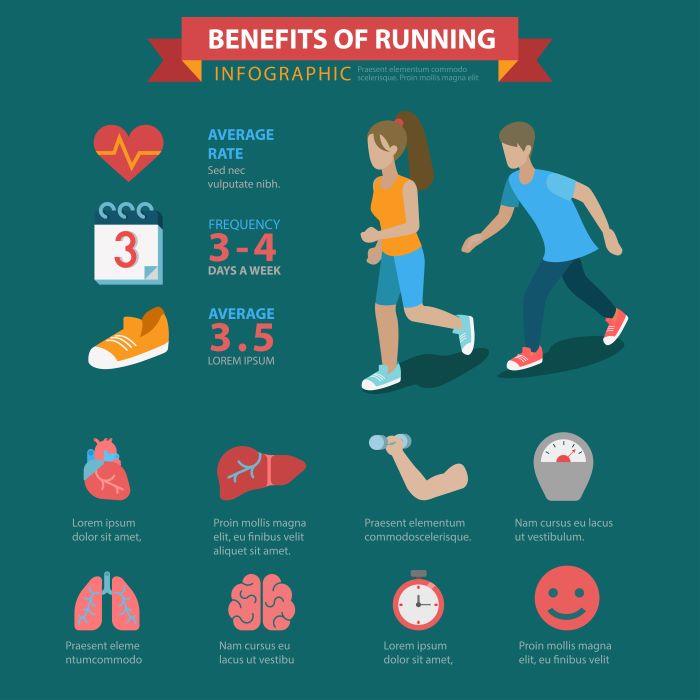In the world of fitness, understanding the concept of running workout equivalent is essential for optimizing your training regimen. Essentially, a running workout equivalent refers to the comparison of different forms of exercise in terms of their overall impact on fitness. This concept allows runners to evaluate how various workouts contribute to their fitness goals.
For instance, a 30-minute brisk walk might be considered equivalent to a 15-minute run. By grasping these equivalencies, you can better tailor your workout routine to include not just running, but also other activities such as cycling or swimming, which can complement your running experience.
Here are some key benefits of understanding running workout equivalents:
- Enhanced Flexibility: By knowing how different workouts stack up, you can mix and match activities to keep your routine fresh and engaging.
- Improved Performance: Integrating diverse workouts can target different muscle groups, leading to enhanced overall performance.
- Injury Prevention: Alternating between running and other forms of exercise can reduce the risk of overuse injuries.
Ultimately, understanding running workout equivalents empowers you to make informed decisions about your fitness journey. Visit our website to learn more and get started today! Click here.
Benefits of Running Workout Equivalents for Fitness

Recognizing the benefits of running workout equivalents can significantly enhance your fitness journey. By understanding how various activities compare to running, you can make informed choices that align with your personal fitness goals.
One of the primary advantages is the ability to diversify your workout regimen. Relying solely on running may lead to boredom and burnout, but incorporating equivalent workouts such as cycling, rowing, or high-intensity interval training (HIIT) can maintain your motivation. This change not only keeps your routine interesting but also challenges your body in new ways.
Additionally, workout equivalents allow you to tailor your training to specific fitness objectives. For instance, if your goal is to build endurance, you might opt for longer cycling sessions that yield similar cardiovascular benefits as longer runs. On the other hand, if you’re looking to increase strength, resistance training can serve as a powerful alternative.
Moreover, understanding these equivalents can help you manage your time effectively. If you’re short on time, knowing that a quick sprint session is equivalent to a longer jog can help you maximize your workout in a limited timeframe. This adaptability is crucial in maintaining a consistent exercise routine amidst a busy lifestyle.
Lastly, recognizing workout equivalents plays a vital role in injury prevention. By alternating between different types of exercise, you can reduce repetitive strain on your joints and muscles, allowing for recovery while still staying active.
How to Calculate Your Running Workout Equivalent
Calculating your running workout equivalent is essential for optimizing your fitness plan and ensuring that your training is effective. The process involves comparing the intensity and duration of various exercises to running.
To start, you need to determine the MET (Metabolic Equivalent of Task) values for the activities you’re considering. MET values are standardized measures that represent the energy cost of physical activities. For instance, running at a 10-minute mile pace has a MET value of around 10, while cycling at a moderate pace has a MET value of 8.
Here’s a simple formula to calculate your workout equivalent:
- Equivalent Workouts = (Duration of Activity in Minutes) x (MET of Activity) / (MET of Running)
For example, if you want to find the equivalent of a 30-minute cycling workout:
- Duration of Activity: 30 minutes
- MET of Cycling: 8
- MET of Running: 10
Plugging these values into the formula gives:
- Equivalent Workouts = (30 x 8) / 10 = 24 minutes of running
This calculation indicates that a 30-minute moderate cycling session is roughly equivalent to a 24-minute run at a 10-minute mile pace.
Understanding these calculations enables you to customize your training regimen, ensuring that you achieve your fitness goals while enjoying the variety of activities available.
Comparing Different Types of Workouts and Their Equivalents

When it comes to enhancing your fitness journey, comparing different types of workouts and their equivalents can provide valuable insights into how to structure your training. Each workout type engages your body differently, and understanding these differences can help you choose the right routine for your goals.
Here are some common workout types and their approximate running workout equivalents:
- Walking: A brisk walk (3.5 mph) has a MET value of around 4.3, meaning that a 60-minute walk is roughly equivalent to a 30-minute run.
- Cycling: Moderate cycling (12-14 mph) has a MET of 8.0. Thus, a 45-minute cycling session can be equated to about 36 minutes of running.
- Swimming: Swimming laps at a moderate pace typically has a MET value of around 6.0. A 30-minute swim is similar to a 25-minute run.
- HIIT (High-Intensity Interval Training): HIIT workouts can have a MET value that varies significantly but often ranges from 8 to 12. A 20-minute HIIT session might equal approximately 25 to 30 minutes of running, depending on the intensity.
Understanding these equivalents allows you to mix and match workouts effectively, ensuring that you don’t plateau while also minimizing the risk of overuse injuries. For instance, if your running routine feels monotonous, you can substitute a cycling or swimming session without compromising your overall fitness level.
By incorporating various workouts into your regimen, you can maintain motivation and continually challenge your body, leading to better results in your fitness journey.
Tailoring Your Workout Routine with Running Equivalents

Designing a workout routine that aligns with your fitness goals can be greatly enhanced by utilizing running workout equivalents. This approach allows you to create a balanced and effective training plan that not only optimizes your time but also maximizes results.
To tailor your routine using running equivalents, consider the following steps:
- Assess Your Fitness Level: Before making any changes, evaluate your current fitness level and running capabilities. This will help you determine how much time you can allocate to different workout types while ensuring you’re not overexerting yourself.
- Set Clear Goals: Define whether you aim to build endurance, improve speed, lose weight, or enhance overall fitness. Your goals will guide your choices in workout types and their equivalents.
- Incorporate Variety: Mixing different workout types keeps your routine fresh and engaging. For instance, if you typically run three times a week, consider replacing one or two sessions with cycling or swimming. This not only prevents boredom but also reduces the risk of injury from repetitive strain.
- Track Your Progress: Use fitness apps or journals to document your workouts and their equivalents. Tracking helps you stay accountable and allows for adjustments based on your progress.
Additionally, remember that cross-training can enhance your running performance. For example, incorporating strength training can improve your running efficiency, while yoga can enhance flexibility and recovery.
By thoughtfully tailoring your workout routine with running equivalents, you can achieve a well-rounded fitness program that is both enjoyable and effective.
Joining the Community for Running Workout Support

Embracing the journey of fitness is always more rewarding when you have the support of a vibrant community. Joining a community for running workout support not only motivates you but also connects you with individuals who share similar goals and passions. Communities can be found both online and offline, providing various platforms for engagement.
Here are some benefits of joining a running community:
- Accountability: Being part of a community encourages you to stick to your workout routine. When others are counting on you, it adds an extra layer of motivation to lace up your shoes and hit the trails.
- Shared Knowledge: Engaging with fellow runners allows you to share tips, experiences, and resources. Whether you’re looking for advice on the best running shoes or workout plans, a community can provide valuable insights.
- Social Interaction: Running can sometimes feel solitary, but being part of a community fosters friendships and camaraderie. Group runs and events create opportunities to bond over shared experiences and challenges.
- Access to Events: Many running communities organize races, fun runs, and challenges. Participating in these events can enhance your running experience and provide a sense of accomplishment.
Whether you join a local running club, participate in online forums, or connect through social media groups, the support offered by a running community can significantly enhance your fitness journey. Visit our website to learn more and get started today! Click here.


